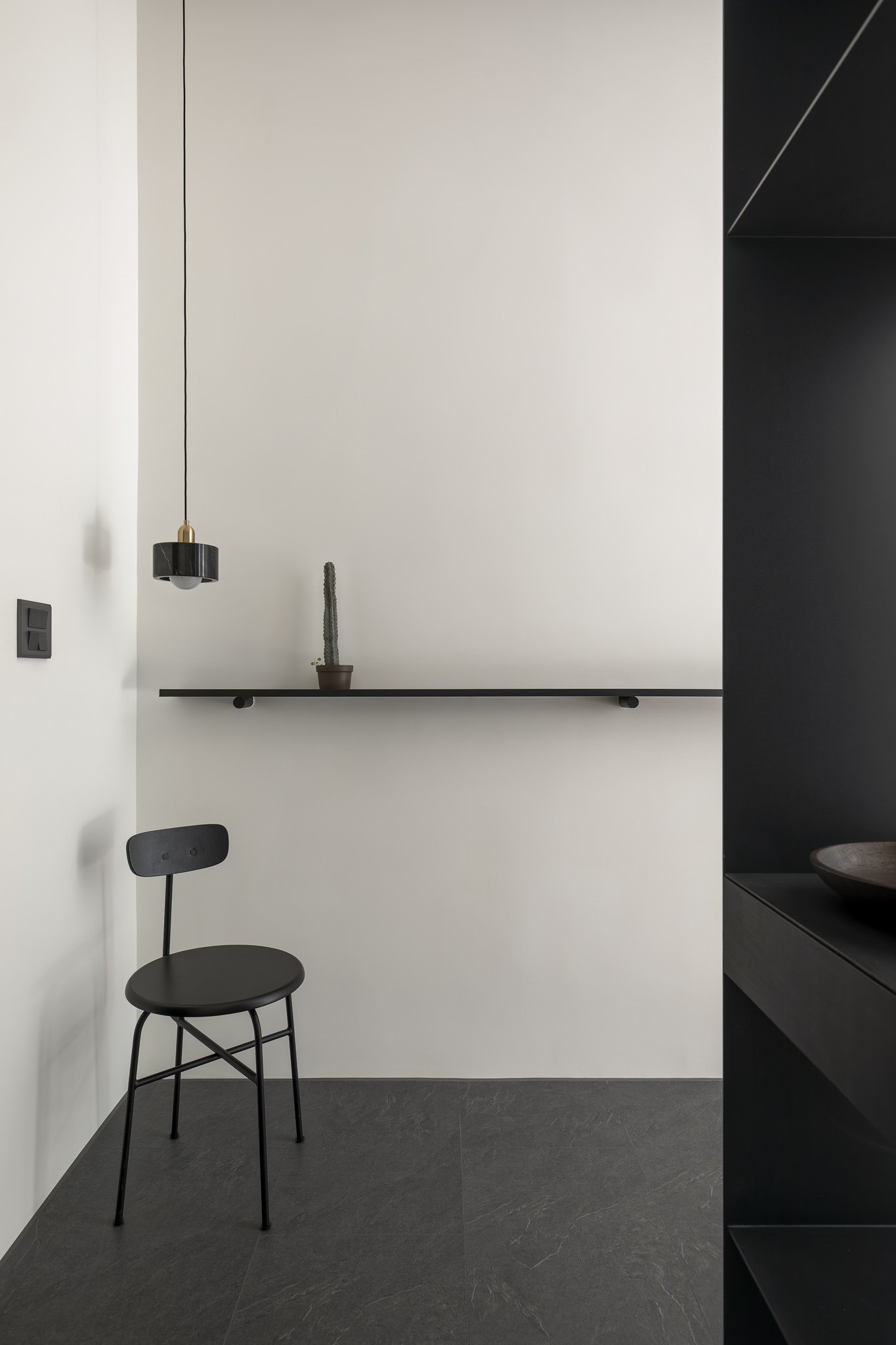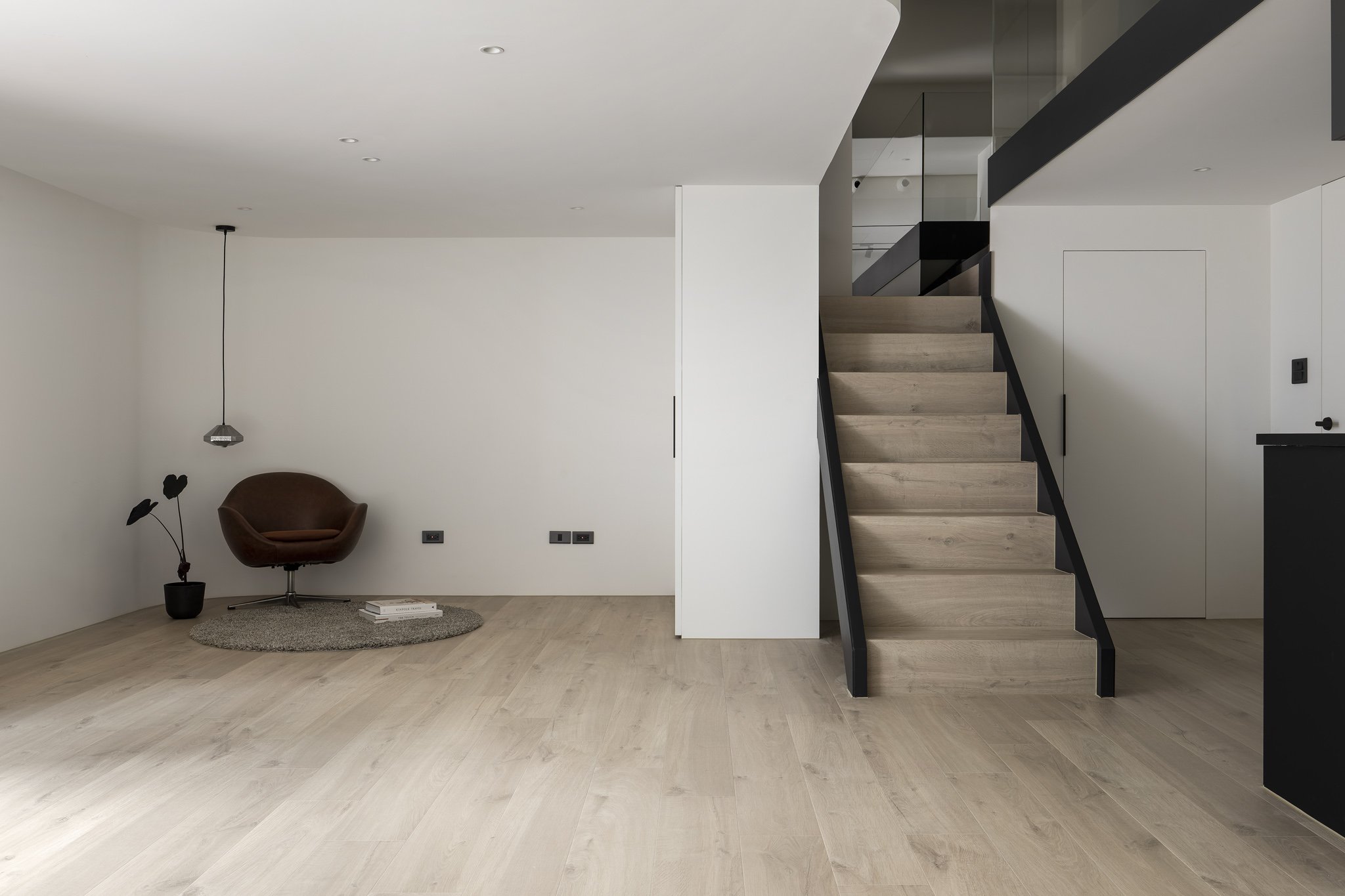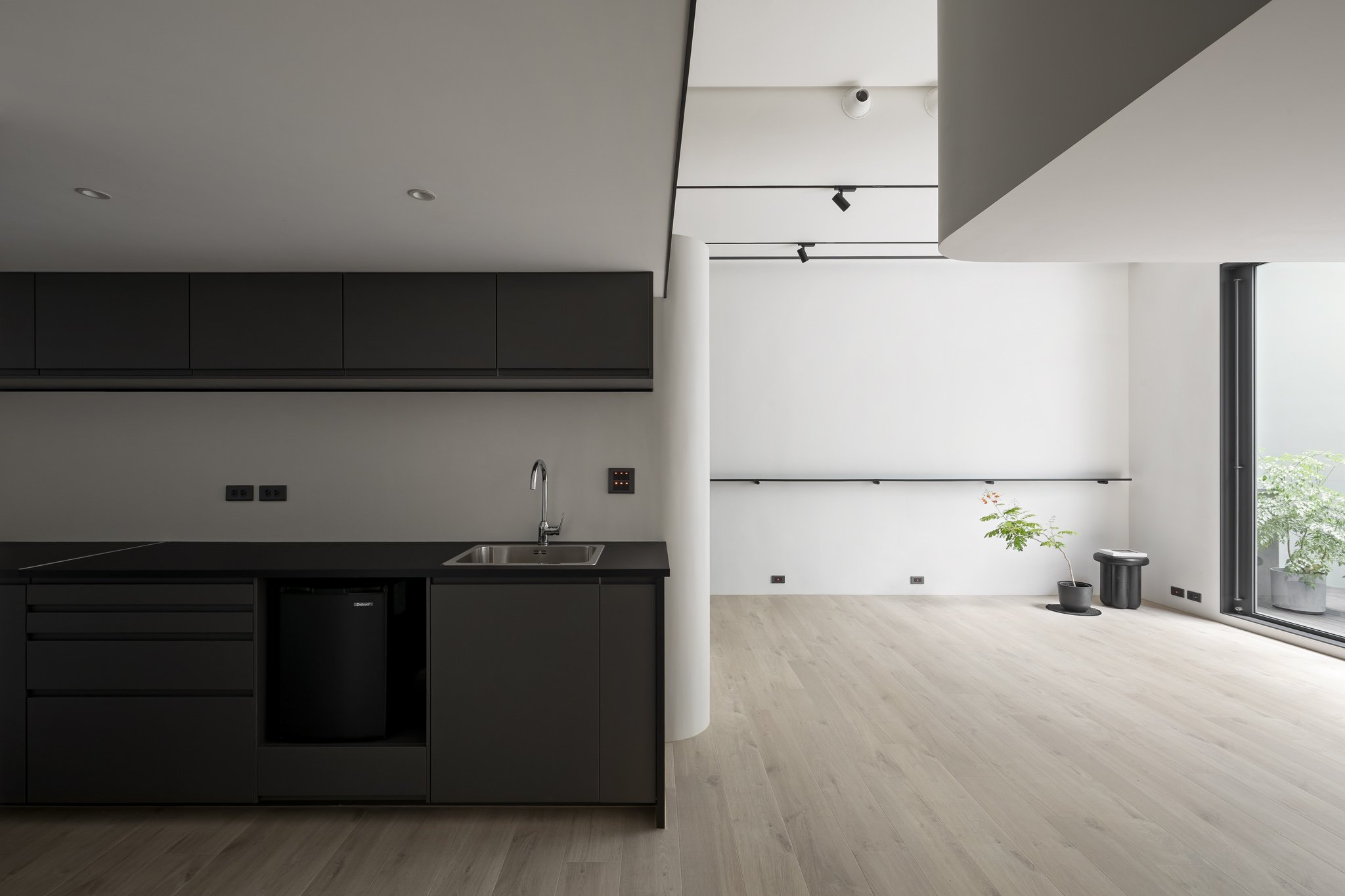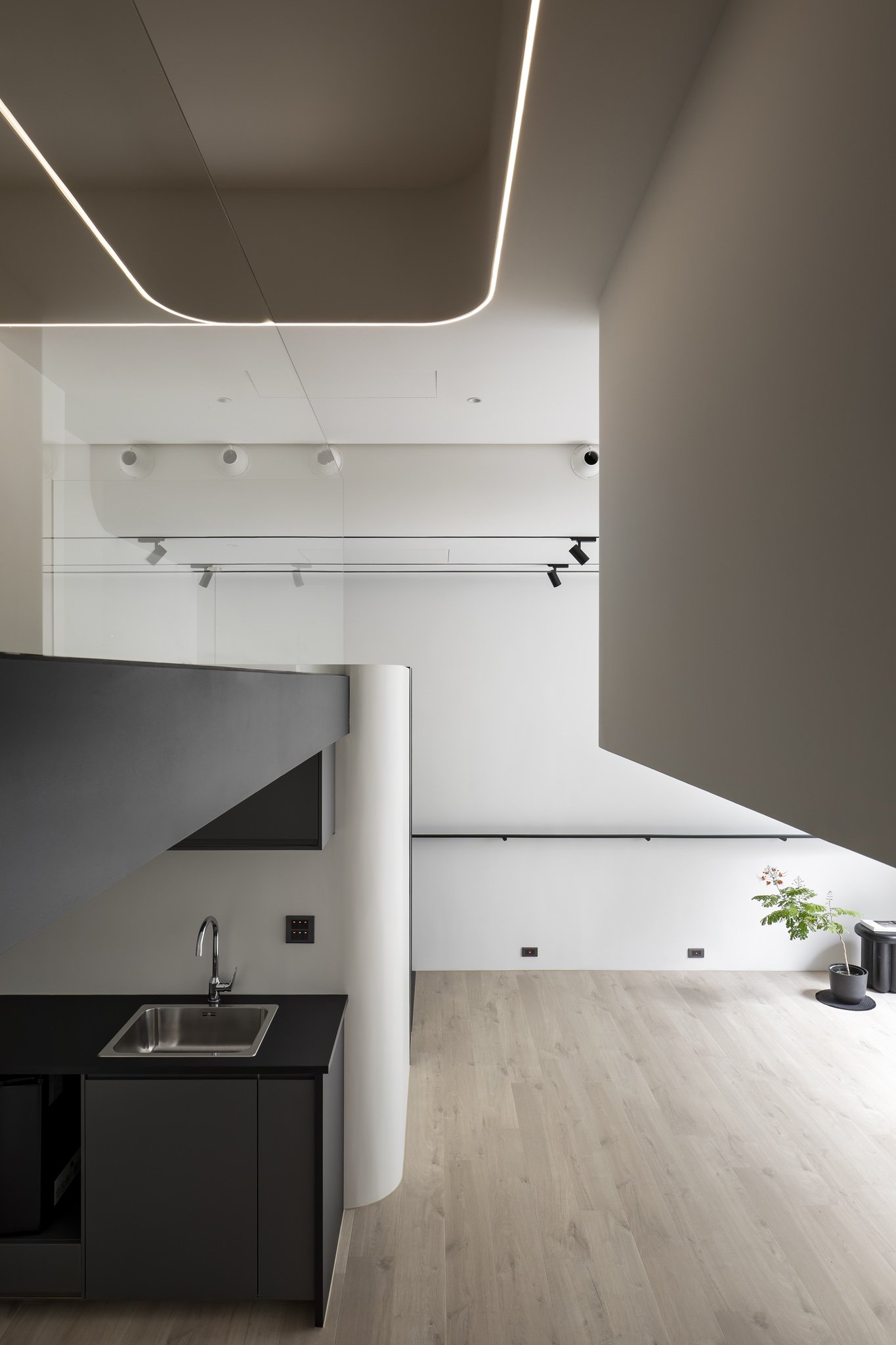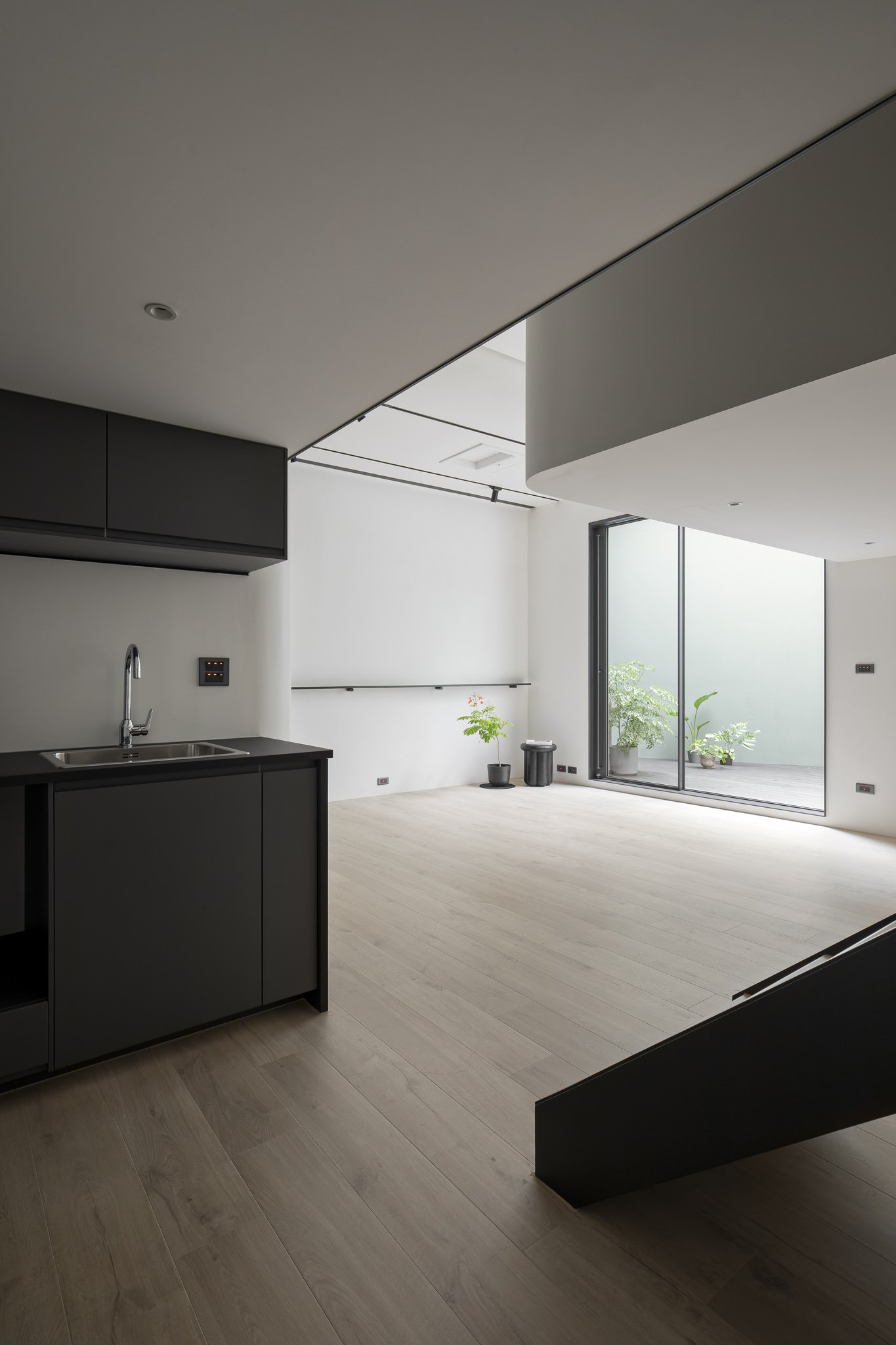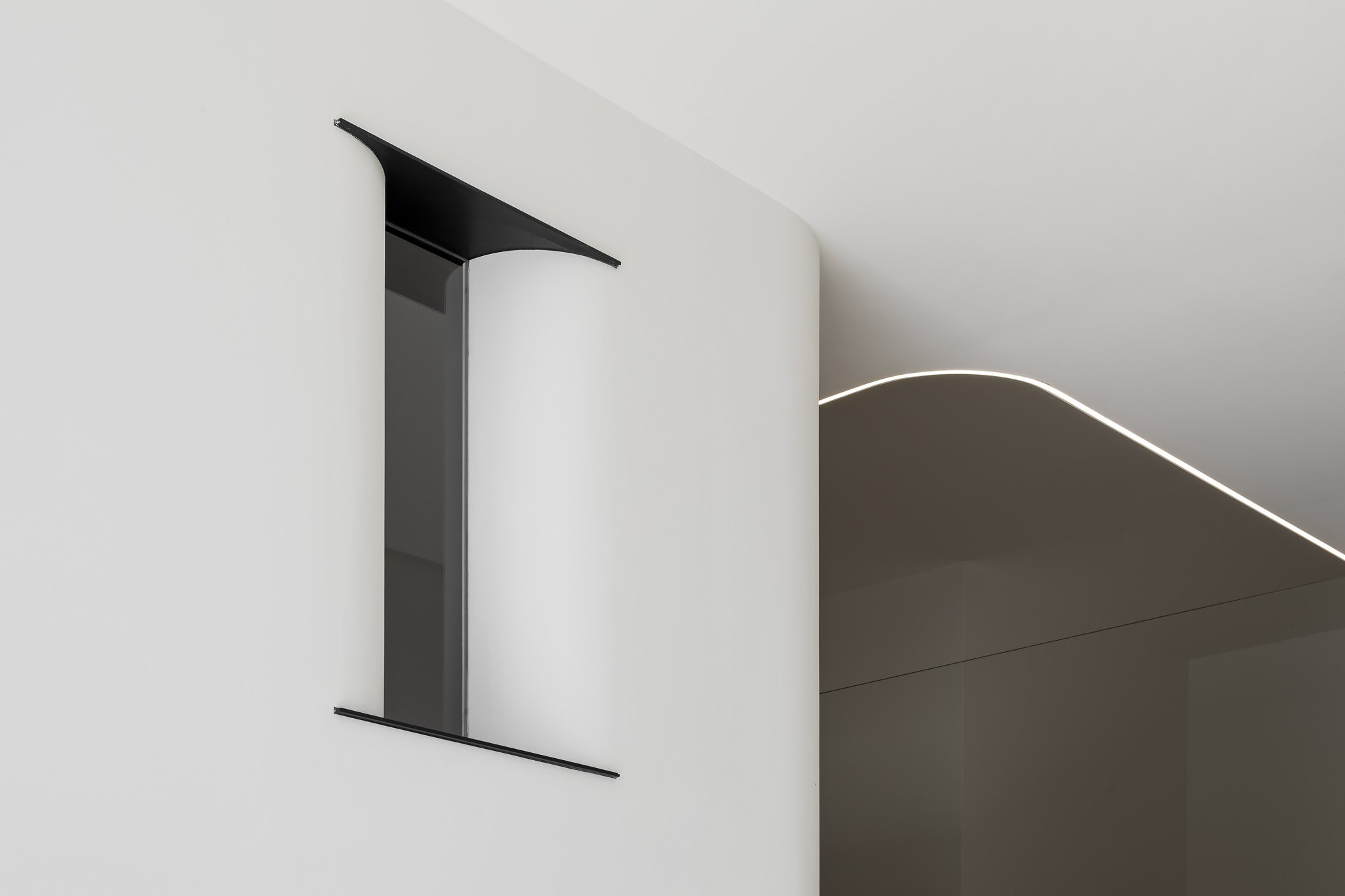
L. STUDIO
案件位於台北北投區,屋齡近30年,空間面積:88㎡,地下一樓。
原本屋況使用大量違禁建材:氧化鎂板,因潮濕變形嚴重,格局狀態凌亂,也因地處地下室空間,光線僅靠陽台的天井露臺,業主定調為學區房與藝術創作空間,我們將格局重新整合,捨去原本大部分的隔間,開放出空間讓光線能夠引導至全區。
格局上我們盡可能地保持彈性,讓使用者更無拘無束地盡情創作,也給孩子更多的活動空間,並加上童趣元素,複層空間中像是城堡厚實圓弧牆體,小窗與下方空間有更多的親子互動。
秉持東方雅韻精神融入空間概念,在材質選擇上多了幾分考究,如串聯玄關至公共空間的壁面畫槽,金屬烤漆的墨黑,替淨白的畫面增添一筆秩序,深度適中的檯面搭配圓管支撐,讓黑顯得輕盈卻不沉重;蛋殼光的塗料則讓日光與人照光更加均勻且柔和地照映各處,創造出彷若膚若凝脂的飽滿感,在玄關處與樓梯處使用大面落地鏡面,利用折射光線來增加自然光線與放大視覺,
後陽台則使用大面積的墨綠,營造綠意引入室的效果。
此案已減法的設計手法做整體主軸,我們因此研討了“Japandi”的風格,希望能夠做出符合台灣文化的簡約設計,並以空間最彈性的方式保留孩子成長過程,
雋永而實用。
In the suburb of Taipei, Beitou, L. Studio emerged from the 88-square-meter basement of a building that dates to the 1990s.
Rooted in the dampness, the severely deformed magnesium oxide boards once covered most of the property. As anticipated, natural light could only be transmitted through the opening of the patio. The team was tasked with transforming this shady underground space into an open, airy studio for kids' studying and the owner’s art-creating session.
The original layout was thus revamped for better lighting and flexibility. Now, the open-plan design yields more space for the owner's workshop, with the kid's area decorated with vibrant, child-centered elements. The mezzanine is enclosed with castle-inspired curvy walls, with the I-shape slit inciting parent-child interactions.
From materials to finishes, the oriental ethos pervades the overall design. The gallery wall shelf bridging the foyer and the open area is metallic-coated in Zen-ish black, like an artistic ink stroke onto the minimalistic wall. In paired with the tube brackets, the felicitous narrowness of the shelf creates an airy, floating sensation to the color. The use of eggshell paint helps transport light more evenly and softly overall, formulating a skin-like fluffiness to the interior. Full-height mirrors installed in the foyer and the stairway also help to improve light distribution and visual space. The rear patio is covered with chunks of blackish green to bring the outdoors inside.
Through the research of the Japandi style, the team strives to develop a minimalistic design based on Taiwanese culture and implement it in this project. With maximized flexibility of space use, the studio is built to last and accommodate children's lifelong growth.
台北L宅 L. STUDIO

